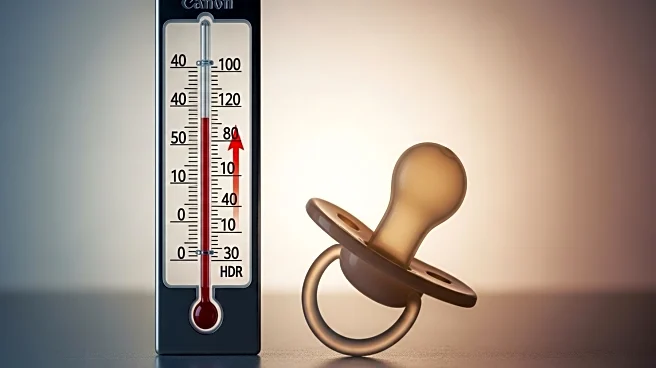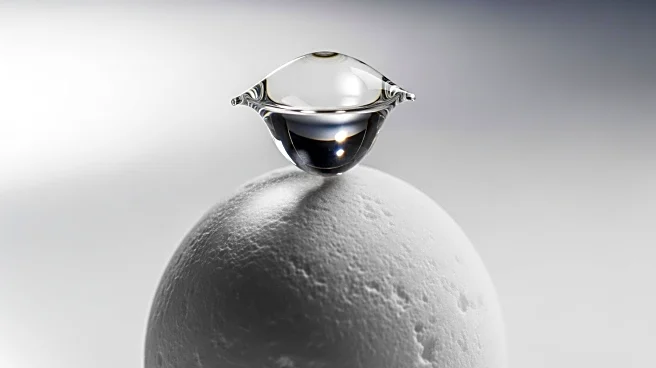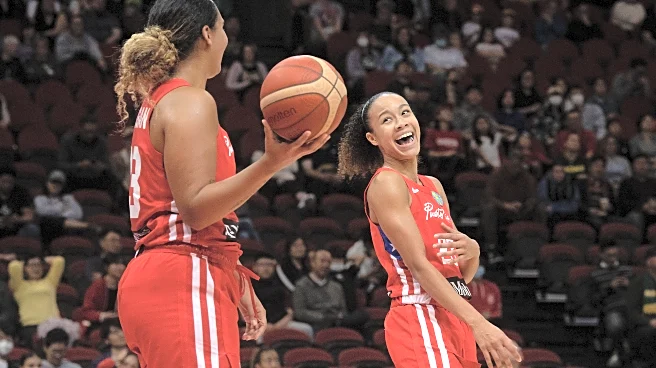What's Happening?
Recent research has revealed that the cries of distressed infants can cause a physical heat response in adults. The study, conducted by scientists at the University of Saint-Etienne in France, used thermal imaging to observe changes in facial temperature when participants listened to recordings of babies crying. The findings showed that both men and women experienced a rush of blood to the face, increasing skin temperature, particularly when the cries were more chaotic and disharmonious. This response is linked to the 'acoustic roughness' of the cries, which indicates the level of pain a baby is experiencing. The study suggests that humans are naturally sensitive to these acoustic features, allowing them to distinguish between cries of discomfort and those indicating real pain.
Why It's Important?
Understanding the physiological response to infant cries can have implications for caregiving and parental instincts. The study highlights the innate human ability to detect distress in infants, which could influence how caregivers respond to babies' needs. This research may also contribute to the development of better tools for assessing infant pain and discomfort, potentially improving pediatric care. Additionally, the findings challenge assumptions about gender differences in response to infant cries, suggesting that both men and women are equally sensitive to these cues.
What's Next?
Further research may explore practical applications of these findings, such as developing technologies or methods to assist caregivers in identifying and responding to infant distress more effectively. The study opens avenues for investigating how these physiological responses can be harnessed in clinical settings to improve infant care. Additionally, the research may prompt discussions on the role of innate human responses in caregiving and how they can be supported or enhanced through training and education.
Beyond the Headlines
The study also touches on broader themes of human empathy and the biological mechanisms that drive caregiving behaviors. It raises questions about how these responses have evolved and their significance in human social structures. The research could lead to a deeper understanding of the emotional bonds between caregivers and infants, and how these bonds are formed and maintained.












